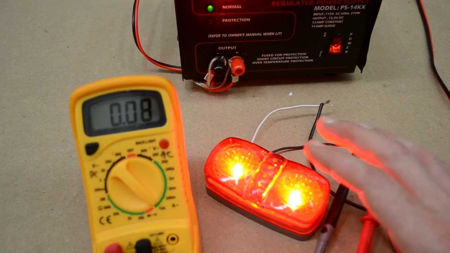Knowing the power draw of your components is a necessary number for determining whether it will work in the product you are building. To figure out those numbers you need to be aware of the amps (current), volts (voltage) and watts (electrical power).
There is a simple formula to calculate power draw applying the three electrical concepts:
amps * volts = watts
The formula shows how much energy a component uses at a given moment.
This formula determines how much energy a piece of equipment uses at a given moment. There are a number of ways to determine consumption through information most components disclose in different places.
Meters and Faceplates
Some equipment provides meters that display power usage, or you can usually find out two of the numbers needed for the formula as manufacturers are required to display acceptable voltage ranges and amps drawn per load on the faceplate of their equipment.
Datasheet information
Without the faceplate information you can determine power consumption with a little more work, by finding the power specifications of each component used in the build, it should be noted, if using older components, they tend to be designed using less efficient power supplies.
“At the individual component level, each manufacturer publishes a datasheet that lists, among many other things, the max and min supply voltages and the expected current for at least one recommended supply voltage. Add up all the components on the same internal power bus (don't forget passives) and back-calculate the current going into each regulator at the voltage that feeds the regulator. (more datasheets) Add up all of those, back-calculating again through cascaded regulators, until you end up at the power input,” Stack Exchange notes
As Stack Exchange explains “this process is much more iterative in design than in testing.” Circuits are typically designed to work at an optimal voltage, or small range of voltages. It may also be designed to consume no more than a maximum current. If the current is not known, then once the circuit is completed, the current is measured.
Products may have a total power budget, depending on the power source and its cooling ability. If the components require more power they can be replaced with more efficient ones and the power demand can be recalculated.
Knowing how and when each component is used in a product should also be considered, as different parts are usually not being used all at the same time.
contact us:
 EN
EN
 English
English
 Chinese
Chinese
 Italiano
Italiano
 Portuguese
Portuguese
 Deutschland
Deutschland
 French
French
 Russian
Russian
 Japanese
Japanese
 Turkish
Turkish
 Korean
Korean
 Spanish
Spanish
 my account & orders
my account & orders

